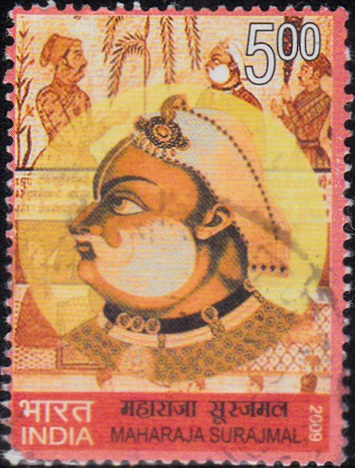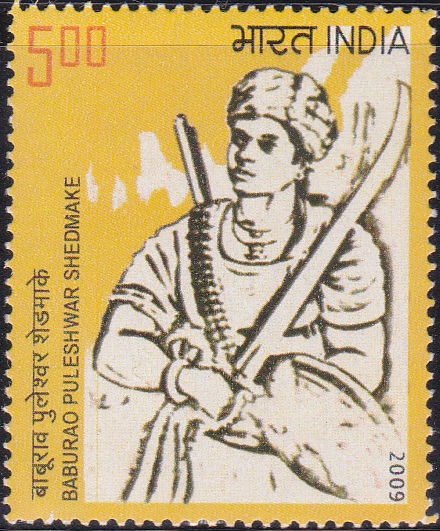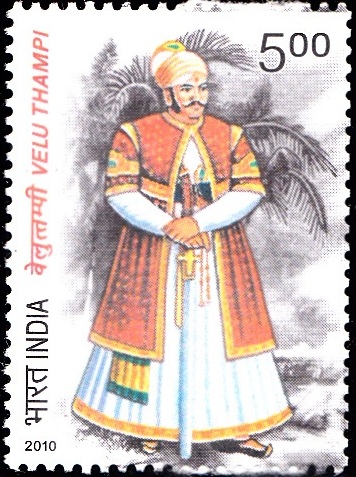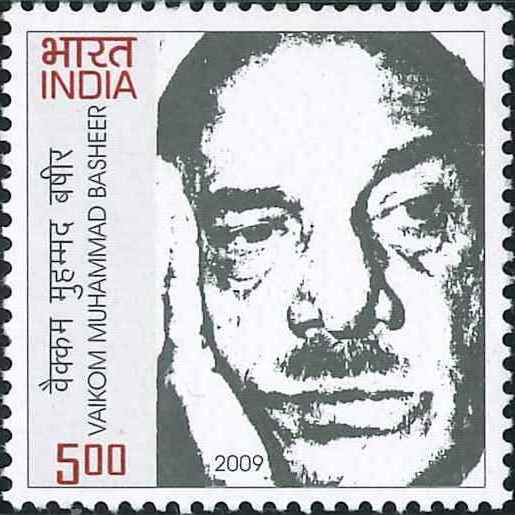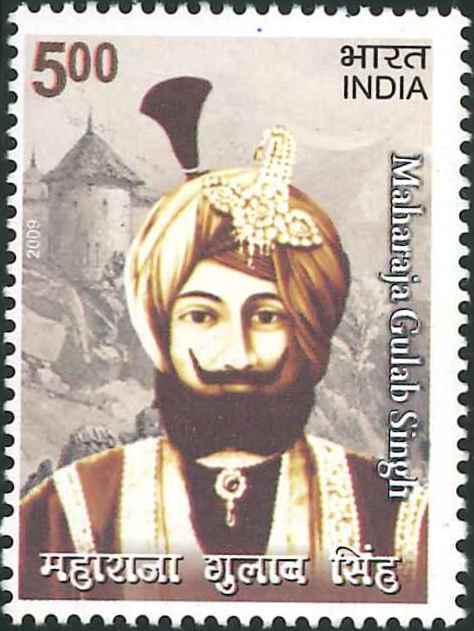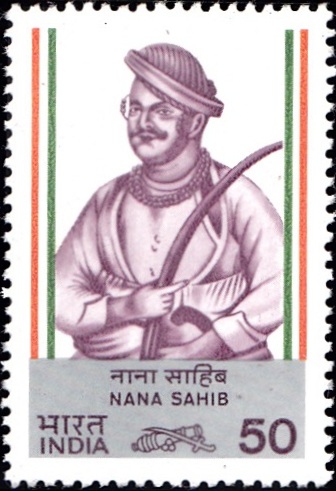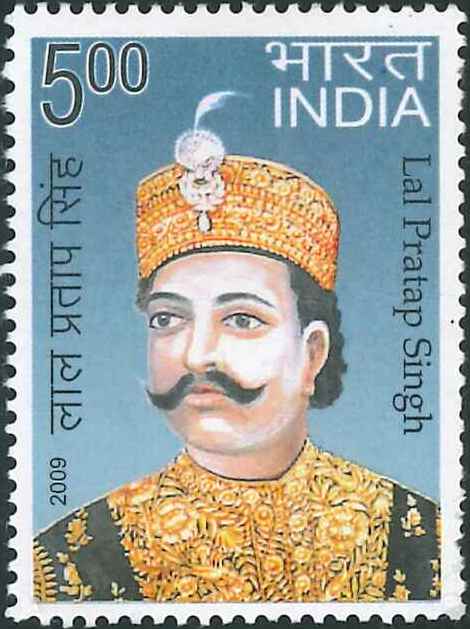
Lal Pratap Singh
A commemorative postage stamp on Rajkumar Lal Pratap Singh, prince of Kalakankar State of Partabgarh (Pratapgarh), one of the key leaders of Indian rebellion of 1857 from Uttar Pradesh :

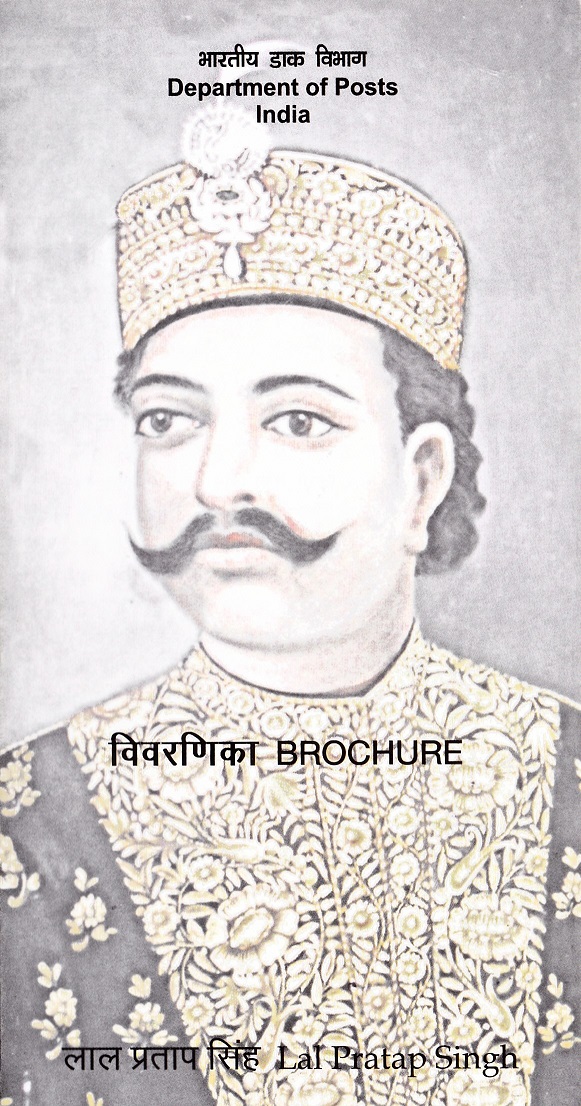 Issued by India
Issued by India
Issued on Dec 22, 2009
Issued for : The Department of Posts is happy to issue a commemorative postage stamp on Lal Pratap Singh.
Credits :
Stamp & FDC : Suresh Kumar
Cancellation : Alka Sharma
Type : Stamp, Mint Condition
Colour : Multi colour
Denomination : 500 Paise
Stamps Printed : 0.4 Million
Printing Process : Wet–offset
Printer : Security Printing Press, Hyderabad
Name : Lal Pratap Singh
Born on Kalakankar, Uttar Pradesh, India
Died on Feb 19, 1858 at Chanda, Sultanpur, Uttar Pradesh, India
About :
- The Visen Rajputs were the Talukdars of Kalakankar of which Rampur was the capital for the state known as Rampur-Dharupur. This branch of the family descended from Roop Mull, younger brother to a ruler of Majhauli in today’s Gorakhpur District. The branch moved to Manikpur near Allahabad till it was finally established in what came to be called Kalakankar by Raja Hanumant Singh.
- The rulers of Kalakankar always fought for independence and against inequity. Among the bravest of such warriors was Lal Pratap Singh, the eldest son of Raja Hanumant Singh.
- During the turbulent period of 1857, when Wajid Ali Shah, ruler of Awadh, was ousted by the East India Company and exiled to Calcutta, and Begum Hazrat Mahal took over the regency of the state for her twelve year old son, Raja Hanumant Singh was the Talukdar of Kalakankar. The East India Company had enforced a system of taxation called “Mahalwari”, which involved constantly increasing revenue demands with consequences disastrous to the landlords and farmers. Their increasing indebtedness led to dissatisfaction and the talukdars sided with the Begum to reinstate the Nawab and overthrow the British. Their trained armies stood ready to assist Awadh at short notice.
- At the behest of the Begum, Hanumant Singh raised a battalion of 1000 soldiers under the command of his eldest son, Lal Pratap Singh. This battalion, called ‘Pratap Jang’, rose to action in February 1858 when the English under Colin Campbell attempted to recapture Lucknow. Colin Campbell was aided by a Gurkha battalion and two Company Battalions. The three forces summoned by the Begum, including the one from Kalakankar, camped at Chande in Sultanpur district, awaiting the signal for battle.
- On 19th February 1858, as the ‘Pratap Jang’ contingent sat down to breakfast, the army of the East India Company attacked them. Each soldier of the ‘Pratap Jang’ picked up whatever weapon came to hand and pitched into the battle till ammunition ran out. The reinforcements were cut off by the Company troops and scattered remnants of the other forces of the Talukdars had been forced to retreat.
- Lal Pratap Singh was advised to withdraw so that he could fight another day. But the brave young warrior led his troop into the final battle, of which the result was inevitable. Many brave soldiers and warriors died that day. Among them was Lal Pratap Singh for whom a glorious death was preferable to the shame of cowardice. The humiliation inflicted on his body by the Company troop Commanders could not decimate the glory of this young warrior. His untimely death devastated his father. He left behind him a young widow, Diggach Kunwari and a son, Ram Pal Singh, born in August 1848. Lal Pratap Singh, a loving son with a kind and generous nature, led a disciplined life, a life that has inspired his future generations to fight the good fight.
- Text : Based on the material provided by the proponents.
Subscribe
Login
0 Comments


